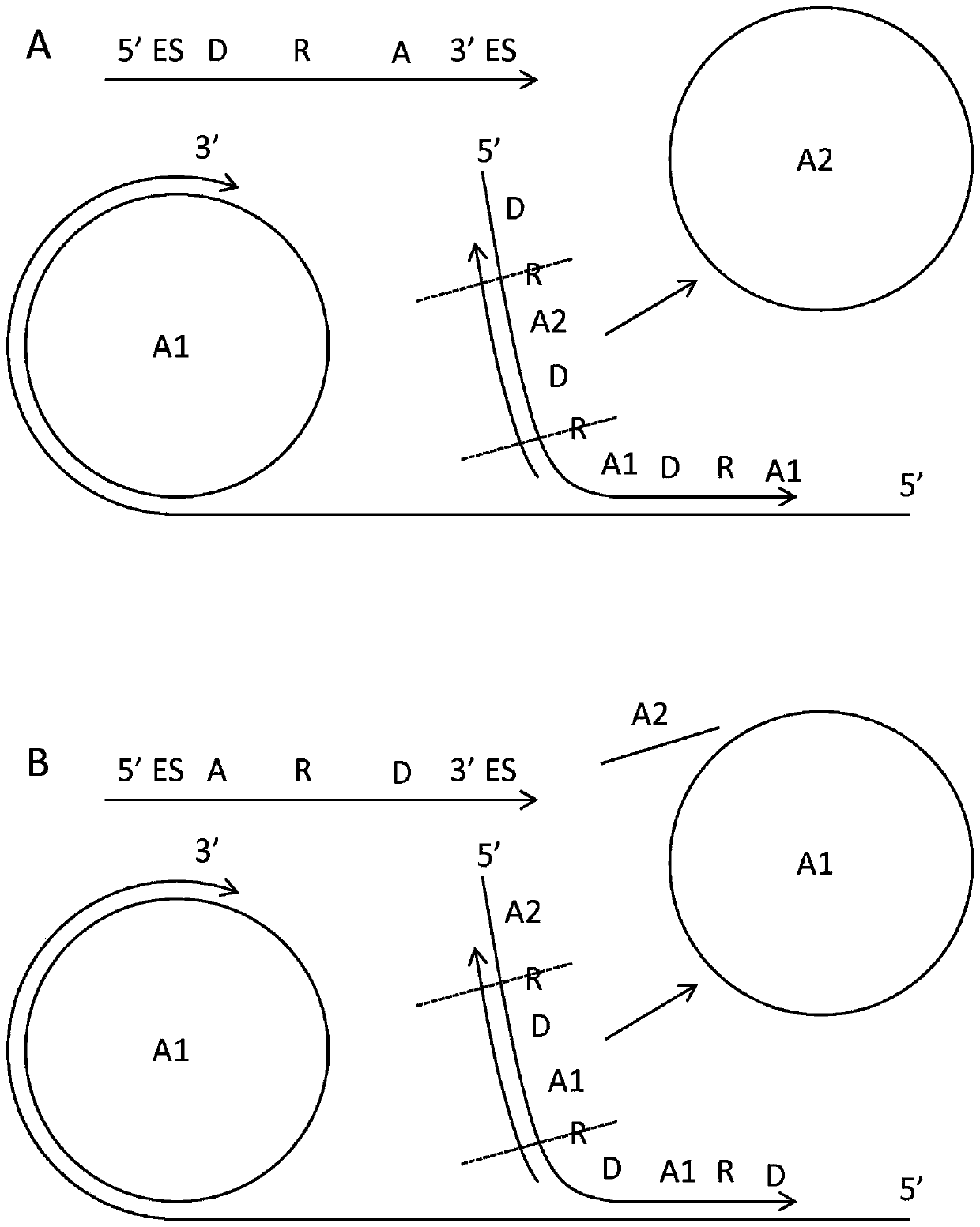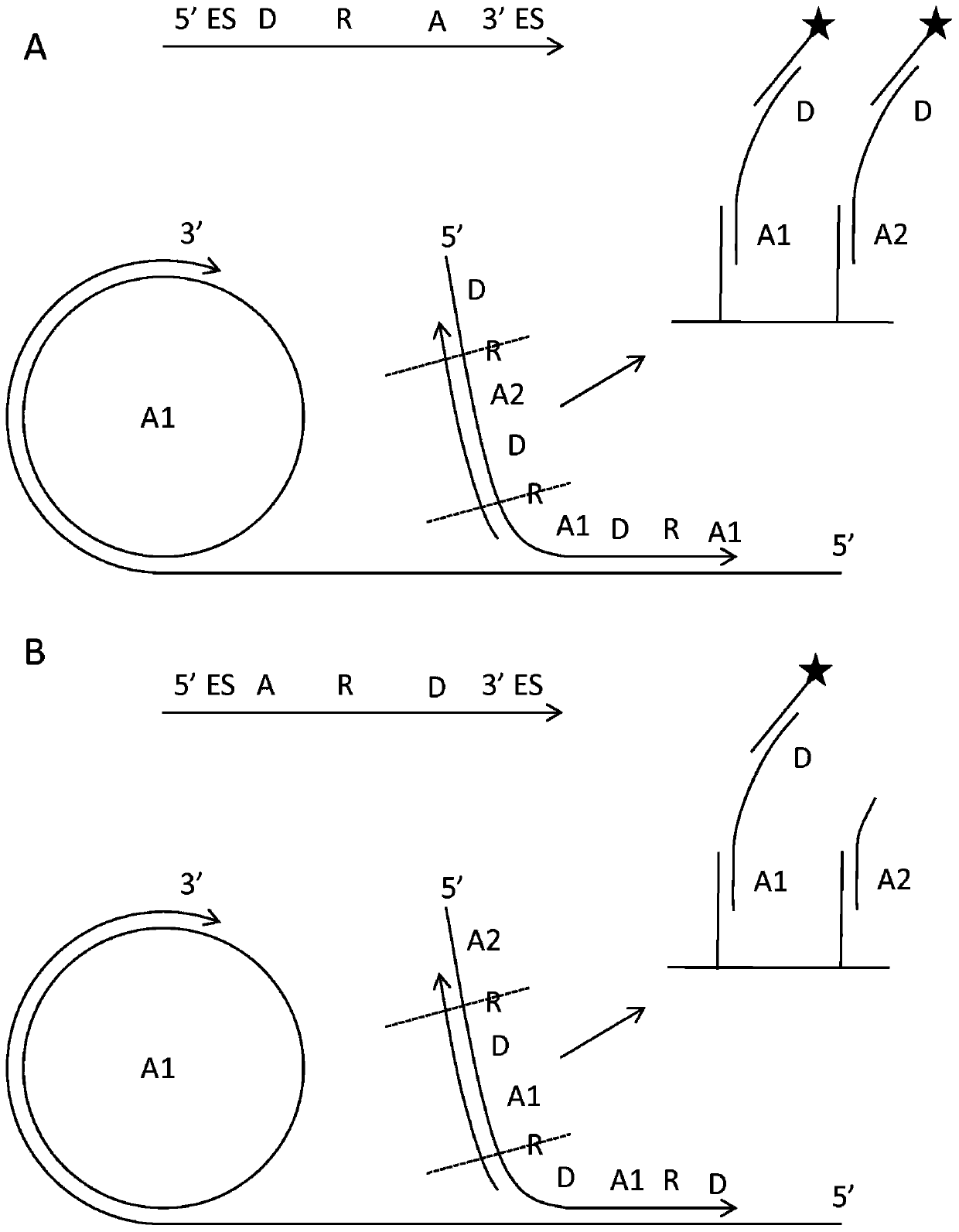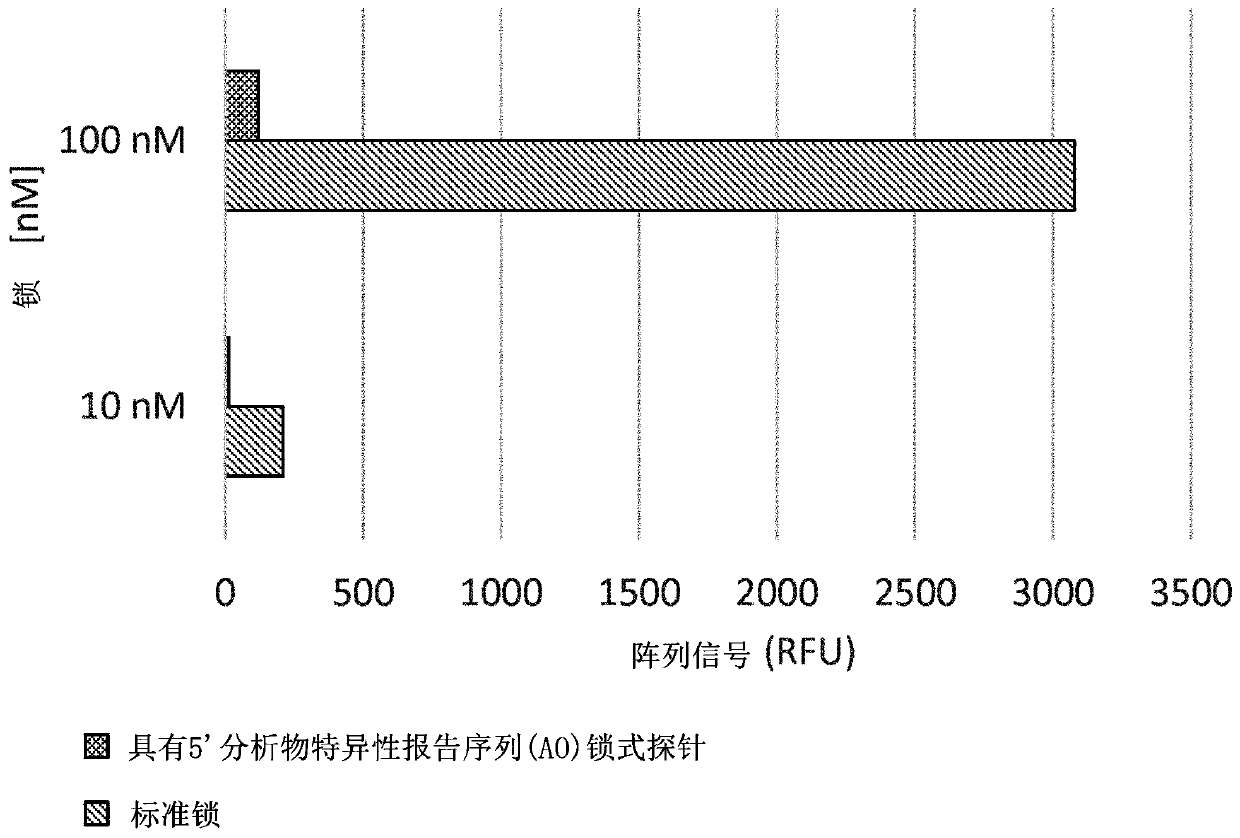Padlock probe detection method
A padlock probe and probe technology, applied in the field of detection of analytes, can solve problems such as extension product amplification
- Summary
- Abstract
- Description
- Claims
- Application Information
AI Technical Summary
Problems solved by technology
Method used
Image
Examples
Embodiment 1
[0244] Example 1 - Template independent signal generation using padlock probes
[0245] Assess the template-independent signal in the assay and use et al., 2012PLoS One 7, e31068 for comparison. Multiplex library of 90 locks complementary to different target nucleic acids in bacteria and yeast with TE buffer (10mM Tris-HCl pH 7.5 1mM EDTA); Dynabeads MyOne TM Streptavidin T1 beads (Invitrogen); used with multiplexed libraries of capture oligonucleotides complementary to different portions of different target nucleic acids.
[0246] In each reaction, there were two positive control oligonucleotides: a linear padlock probe with added synthetic template as a control for ligation and RCA reactions; and a preformed loop alone as a control for RCA reactions.
[0247] Since the target nucleic acid is not present in the sample, the signal is not expected and any signal generated is caused by non-specificity between the padlock probe and another nucleic acid molecule (e.g., the su...
Embodiment 2
[0259] Example 2 - Analyte detection
[0260] Evaluate the signal-to-noise ratio, and use et al., 2012PLoS One 7, e31068 for comparison.
[0261] Experiments were performed as above, where 1250 copies of genomic E. coli DNA were added to positive reactions. Negative controls were performed as described above. exist Figure 4 The signal and signal-to-noise ratio values generated for each positive and negative reaction are shown in .
[0262] The data show that the signal generated in the positive control sample using the method of the present invention is equivalent to the signal generated by the prior art method, but the signal generated in the negative control sample is lower (ie, reduced background) using the new method of the present invention.
[0263] It should be noted that the negative control in the first experiment performed using the prior art method had an unexpectedly high level of background signal. This indicates one of the effects addressed by the pres...
Embodiment 3
[0264] Example 3 - Combined RO / DO Sequence
[0265]Padlock probes with individual array oligonucleotide sequences and combined detection and restriction oligonucleotide sequences are used in the methods described above. A total of 90 padlock probes are used in the padlock probe library.
[0266] Samples of genomic DNA preparations spiked with four bacterial reagents, one of which also contained the sequence of the resistance gene mecA, were analyzed at input amounts of 2500, 500 or 100 genome copies, and the signal was compared to that obtained in the negative control signals for comparison.
[0267] Measure the signal-to-noise ratio of each reaction, and as Figure 5 shown. Signal-to-noise ratios between 10 and 100 were achieved in 100 genome copies.
[0268] The background signal was 47, which was reported as relative fluorescence units (RFU) in the negative control of the five padlock probe sets reported. The average background signal of the padlock probes remaining ...
PUM
 Login to View More
Login to View More Abstract
Description
Claims
Application Information
 Login to View More
Login to View More - R&D
- Intellectual Property
- Life Sciences
- Materials
- Tech Scout
- Unparalleled Data Quality
- Higher Quality Content
- 60% Fewer Hallucinations
Browse by: Latest US Patents, China's latest patents, Technical Efficacy Thesaurus, Application Domain, Technology Topic, Popular Technical Reports.
© 2025 PatSnap. All rights reserved.Legal|Privacy policy|Modern Slavery Act Transparency Statement|Sitemap|About US| Contact US: help@patsnap.com



